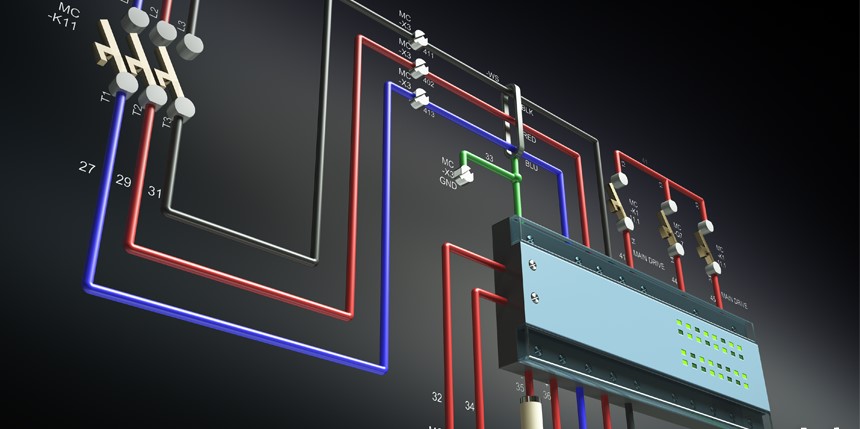In the rapidly evolving world of electrical design, the choice of the right Computer-Aided Design (CAD) tool is crucial for efficiency, accuracy, and innovation.
This article delves into a comparative analysis of leading electrical design software, focusing primarily on EPLAN and AutoCAD Electrical, along with notable alternatives. We begin by exploring EPLAN, a prominent tool in electrical engineering, highlighting its key features and industry applications. This is followed by an examination of AutoCAD Electrical, another industry leader, comparing its user interface and functionalities with EPLAN. Subsequently, we introduce alternative CAD tools, each with unique attributes that cater to different aspects of electrical design.
The comparison extends to essential features like design capabilities, user experience, automation features, and ease of learning, tailored for both professionals and newcomers in the field. Additionally, we consider cost-effectiveness, providing a practical perspective on the financial implications of each software. The article aims to summarize the strengths and weaknesses of these tools in a non-technical, reader-friendly format, supplemented with real-world examples and user testimonials, making it an essential guide for anyone navigating the complexities of electrical CAD software.
By Ahmad Atash Afzon, Cademix Institute of Technology
Introduction
A brief introduction to the significance of CAD tools in electrical engineering.
Electrical AutoCAD and EPLAN, for example, are CAD technologies that have played a critical part in transforming electrical engineering. Engineers may use these advanced software solutions to build elaborate electrical systems, from schematic designs to PCB layouts. CAD tools improve electrical design precision, efficiency, and cooperation, ensuring smooth integration and optimization of complicated circuits. They have become important tools for engineers, allowing them to negotiate the complexities of current electrical installations with unparalleled precision and speed.
Outline the article’s objective: to compare EPLAN, AutoCAD Electrical, and other alternatives
The primary objective of this article is to conduct a comprehensive comparison of leading electrical design software solutions, namely EPLAN and AutoCAD Electrical, while also exploring alternative tools in the market. By evaluating their features, functionalities, and usability, this analysis aims to provide valuable insights for electrical engineers and decision-makers seeking the most suitable CAD solution for their specific project requirements.
Overview of EPLAN and AutoCAD Electrical


EPLAN: Overview of its key features, typical use cases, and industry relevance
EPLAN is cutting-edge electrical design software that is well-known for its powerful features, making it a mainstay in the area of electrical engineering. Its primary features include straightforward schematic design, automatic documentation creation, and seamless connection with PLC programming. Many industries utilize EPLAN, but it’s especially useful for designing intricate electrical systems for control cabinets, automation projects, and industrial facilities. It is applicable in industries such as automotive, energy, and equipment, where precise and efficient electrical design is crucial to project success.
AutoCAD Electrical: Description of its core functionalities, with a brief comparison to EPLAN in user interface and primary features.
EPLAN is utilized in a wide range of industries, most notably in the design of complex electrical systems for manufacturing plants, automation projects, and control cabinets. It is particularly good at creating intelligent schematics, panel layouts, and precise documentation. In comparison to EPLAN, AutoCAD Electrical differentiates itself with a user-friendly interface that closely correlates with the familiar AutoCAD environment, allowing for a smooth learning curve for AutoCAD users. Meanwhile EPLAN is known for its automation and seamless connection with PLC programming, AutoCAD Electrical is known for its versatility and interoperability in larger engineering and drawing applications. The decision between the two is frequently influenced by the user’s desire for interface familiarity as well as individual project needs.
Alternatives to EPLAN and AutoCAD Electrical
Introduction of alternative software options, highlighting their unique features
Several alternative electrical design software alternatives each have their own set of features that cater to different user requirements. “SolidWorks Electrical,” a significant alternative, is known for its seamless integration with 3D modeling capabilities, enabling a holistic approach to electrical and mechanical design. “KiCad,” an open-source option that appeals to those looking for flexibility and cost-effectiveness without sacrificing capability, is another competitor. “Dassault Systèmes CATIA Electrical” is notable for its superior electrical system design skills, which are especially popular in the aerospace and automotive sectors. Each option has significant advantages, giving engineers a variety of options based on their tastes and project objectives.
Brief comparison with EPLAN and AutoCAD Electrical in terms of design capabilities and user experience
AutoCAD Electrical versus EPLAN Comparison In terms of characteristics
Automatic Reporting & Submitting, Customer & Supplier Visibility, Project Management, and PDF Publishing are all included in AutoCAD Electrical. EPLAN is well-known for features like as autoconnection, design tools, automatic reporting, and mass data submission and editing. When comparing AutoCAD Electrical vs EPLAN, consider scalability, customisation, simplicity of use, customer support, and other important considerations. The one that best meets your company’s requirements is the greatest.
AutoCAD Electrical and EPLAN Comparison When it comes to Deployment Type
EPLAN is ideal for Web Based deployment, however AutoCAD Electrical does not support it. When deciding between AutoCAD Electrical and EPLAN, consider which one is compatible with your devices. This will assist to reduce the difficulty following installation.
Which Is Better for Your Industry: AutoCAD Electrical or EPLAN?
AutoCAD Electrical is well-suited to sectors such as All sectors. EPLAN is a superior alternative for all industries. If you can’t decide between AutoCAD Electrical and EPLAN, you may also see if the program contains industry-specific modules. Industry-specific features will increase efficiency and ROI. However, keep an eye out for any hidden costs.
Which Is the Better Option? EPLAN vs. AutoCAD Electrical
AutoCAD Electrical and EPLAN may be utilized for a variety of purposes and are ideal for teams with specialized requirements. If you want a platform that is simple to use, has minimal barriers to entry, and provides a lot of customization, flexibility, and integration choices, you should examine their characteristics in depth during the demo. During the demo, compare AutoCAD Electrical with EPLAN to determine which is ideal for your company.
Comparative Analysis: Features, User Experience, and Cost
| Aspect | EPLAN | AutoCAD Electrical |
|---|---|---|
| Schematic Design | Intuitive with automation features | User-friendly, integrates seamlessly with AutoCAD |
| 3D Integration | Limited | Minimal |
| Documentation | Automated generation of detailed documentation | Comprehensive documentation tools |
| PLC Integration | Strong emphasis on seamless PLC programming | PLC integration available, less automated |
| User Interface | Specialized interface, may have steeper learning curve | Familiar AutoCAD environment, easier learning curve |
| Cost | Tends to be higher | Cost varies, may offer more flexible pricing |
| Industry Relevance | Widely used in manufacturing, automation, and control systems | Versatile, used across various engineering disciplines |
| Customization | Highly customizable | Offers customization, but not as extensive |
| Feature/Software | EPLAN | AutoCAD Electrical | SolidWorks Electrical | Zuken E3.series | SEE Electrical |
|---|---|---|---|---|---|
| Design Capabilities | High-level design tools; specialized in industrial automation. | Versatile design capabilities for various engineering disciplines. | Holistic design approach with seamless 3D integration. | Advanced design capabilities with a focus on electrical systems. | Comprehensive design tools for electrical projects. |
| User Interface | Specialized interface; may have a steeper learning curve. | Familiar AutoCAD environment; user-friendly interface. | User-friendly interface; aligned with broader SolidWorks environment. | Intuitive interface tailored for electrical design. | User-friendly interface; relatively easy to learn. |
| Automation Features | Strong automation features, particularly in PLC programming. | Offers automation tools, but may not be as extensive as EPLAN. | Automation features streamline design processes. | Automation features support efficiency in design. | Includes automation features for streamlined design. |
| Integration with Other Tools | Integrates with various tools for a comprehensive solution. | Seamless integration within the broader AutoCAD environment. | Integration with other SolidWorks tools for a unified design experience. | Integration capabilities for a connected design workflow. | Integrates with other tools for a cohesive design process. |
| Learning Curve | Potential steeper learning curve due to specialized features. | Relatively easy learning curve, especially for AutoCAD users. | Moderate learning curve with additional benefits for 3D integration. | Learning curve may vary but generally user-friendly. | Relatively easy to learn for new users. |
| Pricing | Pricing tends to be higher; varies based on licensing options. | Pricing varies; potential cost-effectiveness for some users. | Pricing structure depends on the selected package and licensing. | Pricing may vary based on the chosen configuration. | Pricing varies; can be cost-effective for certain budgets. |
| Customization Options | Highly customizable for tailored design processes. | Offers customization options, but not as extensive as EPLAN. | Provides customization options within the SolidWorks framework. | Allows customization for specific design requirements. | Customization options available for user preferences. |
Conclusion and Recommendations
Summarize key findings from the comparisons
In conclusion, the comparison between EPLAN, AutoCAD Electrical, and alternative electrical design software options highlights diverse strengths catering to various user needs. EPLAN stands out for its automation features and seamless PLC integration, making it well-suited for complex industrial projects. AutoCAD Electrical, with its familiar interface and integration with the broader AutoCAD environment, offers versatility across engineering disciplines.
Recommendations depend on user requirements: EPLAN for industrial automation, AutoCAD Electrical for versatility, SolidWorks Electrical for 3D integration, KiCad for budget-friendly flexibility, and CATIA Electrical for advanced design needs. Choose based on project specifics and user preferences for an optimal electrical design solution.
Provide recommendations based on different user needs (e.g., beginners, professionals, budget constraints)
In summary, EPLAN and AutoCAD Electrical cater to different needs in electrical design. EPLAN is great for industrial automation and complex projects, while AutoCAD Electrical offers versatility and a familiar interface.
- For beginners: AutoCAD Electrical’s user-friendly environment is recommended.
- For professionals: EPLAN’s specialized features and automation are beneficial.
- For budget constraints: Consider KiCad, an open-source option, or evaluate AutoCAD Electrical for its widespread use and potential cost-effectiveness.
Final thoughts on choosing the right electrical design tool
Having the correct CAD tool is essential for success in the ever-changing field of electrical design. In the field of electrical engineering, prospective employers and HR managers have to take into account the particular requirements of their teams and projects. Whether it’s the cost-effectiveness of alternatives like KiCad, the variety of AutoCAD Electrical, or the accuracy of EPLAN, the decision demonstrates a dedication to effectiveness, creativity, and adaptability. For prospective employers, this article provides a thorough overview, enabling them to make well-informed selections while navigating the complexity of electrical CAD software.
A few practical advice
In conclusion, when navigating the landscape of electrical design tools, consider the specific demands of your project and the preferences of your team. For intricate industrial automation, EPLAN’s automation features shine, while AutoCAD Electrical’s user-friendly interface caters to versatility. If on a budget, explore cost-effective alternatives like KiCad, and for advanced design needs, Dassault Systèmes CATIA Electrical stands out. Ultimately, the right choice is the one that aligns seamlessly with your unique project requirements, ensuring efficiency and precision in your electrical design endeavors.
About the Author
The author has a strong desire to educate everyone who is willing to learn. Ahmad Atash Afzon is a graduate of electrical engineering, currently a member of Cademix Career Autopilot Program. He has years of experience in the field of simulation of electrical protection system. Ahmad has more than 9 years of experience working in oil Refineries, Design of Protection systems, power Distribution panels and control circuits of electromotors.
Ahmad Atash Afzon, a prolific writer for Cademix Magazine, has consistently contributed insightful articles on electrical design tools, particularly focusing on EPLAN, AutoCAD Electrical, and their alternatives. His work offers practical advice, guiding readers through the complexities of choosing the right tool for their projects.
He has also extensive knowledge of Matlab programming, including visualization techniques and how to Create animation in Matlab. Please feel free to contact him, if you have any inquiries a question about the topic.

Email: ahmad.atashafzon21@gmail.com
Linkedin: linkedin.com/in/ahmad-atash-afzon-a713921b2
References
https://www.eplan.help/en-us/Infoportal/Content/htm/portal_home.htm
https://www.autodesk.com/products/autocad/included-toolsets/autocad-electrical
Keyword related to EPLAN, AutoCAD Electrical and the Alternates
Eplan, AutoCAD, SolidWorks Electrical, Electrical engineering software, CAD tools for electrical design, EPLAN software, AutoCAD Electrical, Electrical design alternatives, Circuit design software, PCB design tools, Electrical schematic software, Automation design tools, Electrical documentation software, Industrial control systems, PLC programming software, Electrical CAD programs, Design automation in electrical engineering, Electrical drafting tools, Electrical diagram software, Electrical project management, Electrical panel design, Electrical simulation tools, Design validation in electrical engineering

